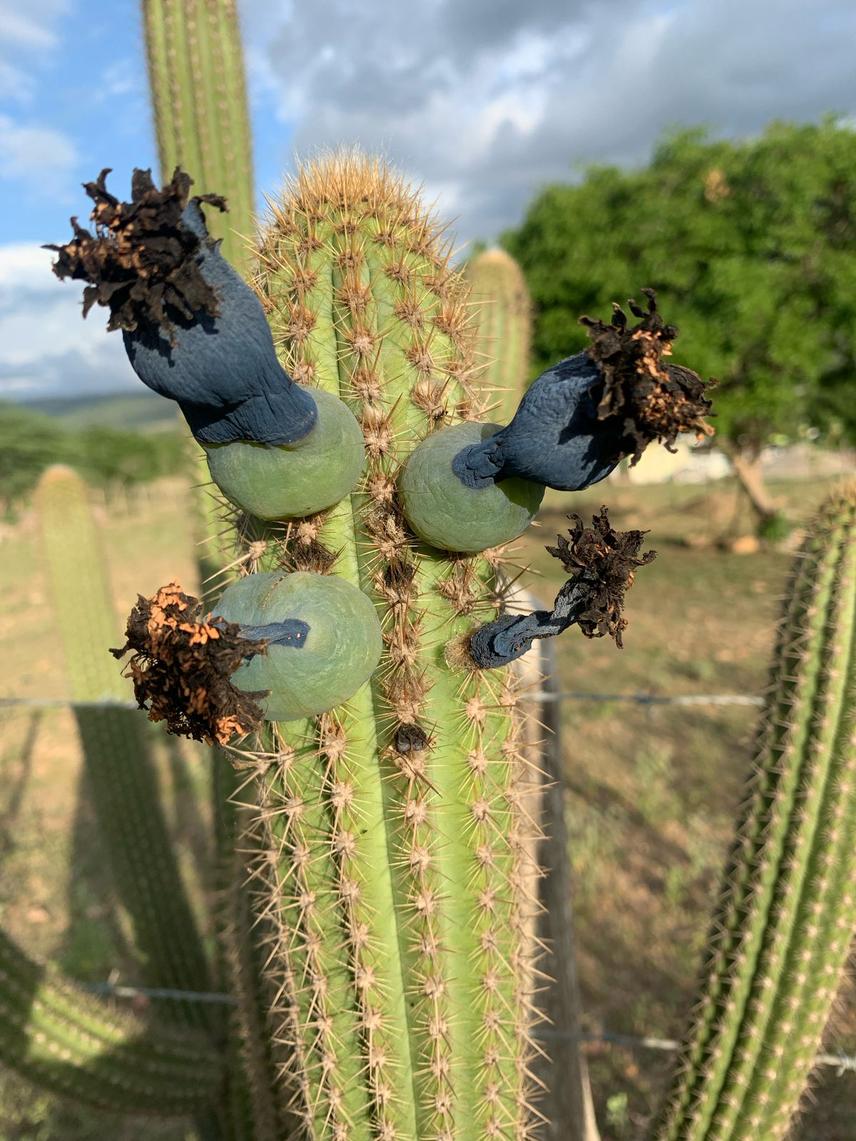Joyce Brito
Our study investigates how the functional characteristics of plants, both native and exotic, influence multifunctionality in a Caatinga socioecological system. The research focuses on a Caatinga community, exploring how plant species are selected based on perceived functional characteristics and how these characteristics/traits impact the uses attributed to the species, including food, traditional medicine, and construction uses.

Fruit of the facheiro (Pilosocereus gounellei), common in the region and used for various purposes, such as food, medicine, and the construction of objects. ©Joyce Brito.
The main research questions are: (1) How do perceived functional characteristics determine the use of species? (2) How do perceived functional characteristics determine the use of native and exotic species? The study also seeks to assess the functional redundancy of species and how cultural value influences the perception of priority functional characteristics. Additionally, the relationship between functional diversity and resilience, as perceived by the community, will be analyzed, including the impact of functional characteristics on the ability to adapt to environmental challenges, such as droughts or future climate changes. Another focus of the research is to map functional characteristics associated with multifunctional species (those used in multiple categories of use) and to compare the perceptions of different groups, such as gender and generation, regarding these characteristics.
Header image: View of the center of the Carão community. ©Joyce Brito.